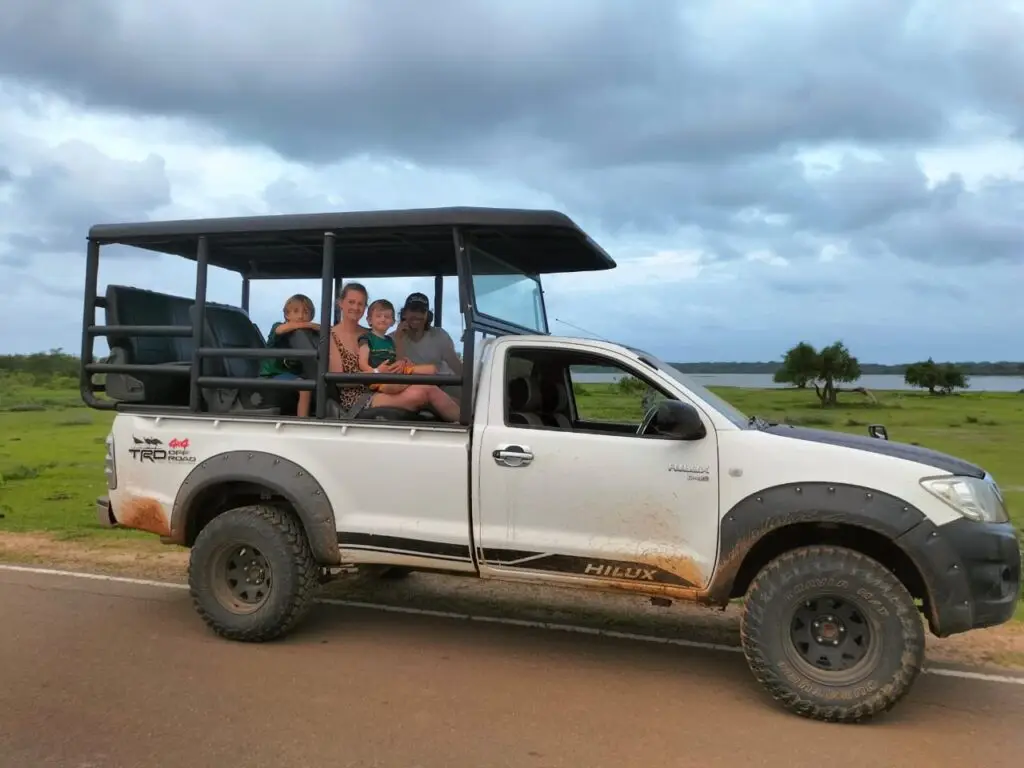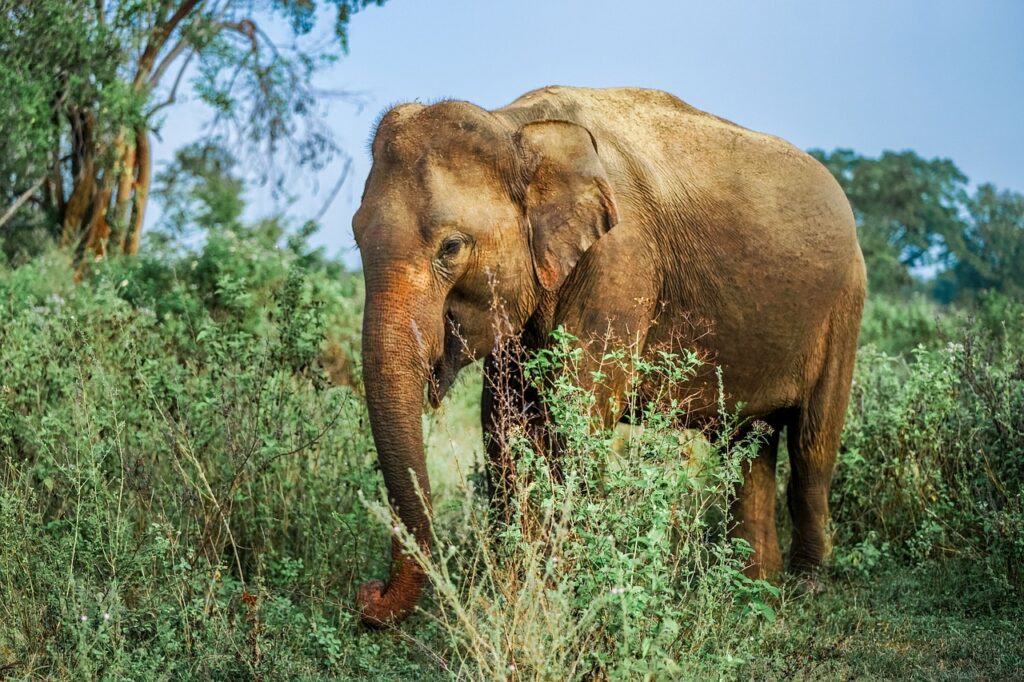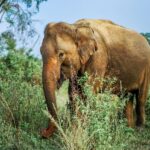Introduction to Yala National Park
Yala National Park, located on the southeastern coast of Sri Lanka, is renowned for its rich biodiversity and is one of the most visited national parks in the country. Spanning over 979 square kilometers, this protected area encompasses a variety of ecosystems, including grasslands, scrublands, and coastal lagoons. Such diversity provides a conducive environment for numerous species of flora and fauna, making it a vital wildlife sanctuary.
The park is particularly significant for its efforts in conserving the Sri Lankan leopard, a subspecies that has adapted uniquely to the local environment. Yala is home to one of the highest densities of these elusive creatures in the world, attracting nature enthusiasts and wildlife photographers from around the globe. The role of Yala National Park in preserving the Sri Lankan leopard cannot be overstated, as it offers a sanctuary where these magnificent animals can thrive without the pressures of urbanization and habitat loss.
Beyond leopards, Yala National Park harbors a myriad of other wildlife species, including elephants, deer, and an array of bird species. The varied habitats within the park create a perfect playground for both terrestrial and avian wildlife, making it an ideal destination for eco-tourism. Visitors to Yala can experience thrilling safaris that offer a chance to witness the famous Sri Lankan leopard in its natural habitat, a truly unforgettable experience for animal lovers and adventurers alike.
As wildlife conservation gains global attention, the significance of Yala National Park as a refuge for the Sri Lankan leopard and various other animals continues to highlight the importance of protecting natural landscapes. The park serves not only as a critical habitat for wildlife but also as a symbol of Sri Lanka’s diverse ecological heritage.
Significance of Leopard Spotting
Leopard spotting in Yala National Park stands as a defining experience for wildlife enthusiasts. The Sri Lankan leopard, a sub species revered for its exceptional beauty and elusive nature, plays a crucial role in the ecosystem as an apex predator. This status not only enhances its mystique but also contributes significantly to the ecological balance within the habitats they inhabit. Their presence helps regulate the populations of prey species, which in turn maintains the health of the ecosystem. The sight of these magnificent creatures in the wild is not merely a visual treat; it is a poignant reminder of the interconnectedness of nature.
The rarity of spotting a leopard in Yala adds to its appeal. As these animals are typically solitary and nocturnal, witnessing one during the day is a thrilling experience that few get to enjoy. Consequently, many tour operators prioritize leopard tracking as a highlight of their itineraries, catering to the growing demand from tourists eager to capture memorable moments. This demand underscores the significance of Yala as not just a national park but a premier destination for wildlife enthusiasts hoping to observe the Sri Lankan leopard in its natural habitat.
Furthermore, leopard spotting contributes to conservation efforts in Yala. As tourists flock to witness these remarkable creatures, conservation initiatives gain visibility and funding, which are essential for protecting the habitats of leopards and other wildlife. Through responsible tourism, visitors can partake in sustainability efforts that prioritize both wildlife preservation and enjoyment of the natural environment. In this context, engaging in leopard spotting in Yala transcends mere leisure; it becomes a pivotal act of support for biodiversity and conservation initiatives in Sri Lanka.
Best Times to Visit Yala for Leopard Spotting

Yala National Park, known for its thriving population of the Sri Lankan leopard, offers a unique opportunity for wildlife enthusiasts and photographers alike to witness these magnificent creatures in their natural habitat. Understanding the best times to visit Yala is essential for maximizing the chances of leopard sightings. The park is characterized by a tropical climate, with distinct dry and wet seasons that play a significant role in wildlife behavior and visibility.
The dry season, typically from February to July, is generally considered the best time for leopard spotting. During these months, water sources become scarcer, encouraging leopards to venture into open areas, making them more visible. Early mornings and late afternoons are particularly fruitful for sightings, as leopards are more active during these cooler hours. The mornings in Yala provide a serene atmosphere where the soft light accentuates the beauty of the landscape, contributing to a rewarding safari experience.
Conversely, the wet season from October to January sees increased vegetation growth, which can make spotting leopards more challenging. However, visiting during this period can still be fruitful, especially right after rainfall when wildlife emerges to bask in the sun. Evening safaris during this time often yield fruitful results as leopards hunt for prey, taking advantage of the cover provided by the dense foliage.
Ultimately, the time of day plays a critical role in leopard behavior. As ambush predators, Sri Lankan leopards prefer to hunt during twilight hours. Thus, planning a visit to Yala around dawn—when the park opens—or late in the afternoon can significantly enhance the experience. By strategically selecting your safari times, the possibility of observing the elusive Sri Lankan leopard becomes more promising.
Yala Safari What to Expect on a Leopard Safari

Embarking on a leopard safari in Yala National Park presents a thrilling opportunity for wildlife enthusiasts to witness the elusive Sri Lankan leopard in its natural habitat. Visitors can anticipate a well-structured tour experience, usually utilizing open-top 4×4 vehicles designed specifically for safari excursions. These vehicles allow for unobstructed views of the park’s rich flora and fauna, significantly enhancing the leopard spotting experience.
Typically, safari tours in Yala are led by experienced guides who possess an in-depth understanding of the park’s ecosystem. They provide informative commentary on the various species and behaviors of wildlife encountered along the way. The tours are generally offered at various times throughout the day, with early morning or late afternoon safaris being the most productive for sightings, particularly of the Sri Lankan leopard. This timing coincides with the animals’ natural hunting patterns, increasing the likelihood of observing their elusive behavior.
During your drive, it is advantageous to stay alert and engaged with your surroundings. Guides often communicate with one another to share information about recent leopard sightings, making it crucial for participants to remain vigilant. Listening carefully for any changes in the environment, such as rustling bushes or unusual calls from local wildlife, can enhance your chances of spotting a leopard. Staying calm and patient is vital; sometimes, a sighting may require waiting quietly for the right moment as the animal may be hidden nearby.
In preparation for your safari, it is advisable to bring along binoculars and a camera with a zoom lens to capture stunning images of Yala’s diverse wildlife. Attire should be practical and comfortable, ideally in neutral colors to blend in with the environment. With the right preparation and guidance, a leopard safari in Yala can be a breathtaking experience that offers a deeper appreciation for this magnificent species and its role in the ecosystem.
Yala Wildlife and Birdlife
Yala National Park, renowned for its remarkable leopard sightings, offers a wealth of biodiversity that makes it a prime destination for wildlife enthusiasts. Nestled in the southeast region of Sri Lanka, Yala spans approximately 979 square kilometers and is home to an astonishing array of flora and fauna. This national park hosts various ecosystems, including scrub jungles, wetlands, and coastal regions, each supporting its unique wildlife communities.
In addition to the elusive Sri Lankan leopard, Yala is inhabited by a variety of other large mammals. These include elephants, which can often be seen roaming in herds, as well as spotted deer, sambars, and wild boars. These mammals create a vibrant landscape of activity that captivates visitors. The interactions of these species enhance the overall experience of wildlife viewing beyond just the pursuit of leopards, showcasing the rich tapestry of life in this region.
Moreover, Yala is an ornithologist’s dream, boasting over 200 recorded bird species. Birdwatchers can observe a diverse range of avian life, from endemic species like the Sri Lanka jungle fowl and the crimson-fronted barbet to migratory birds that visit during different seasons. The presence of both wetland and terrestrial habitats offers excellent opportunities for spotting waterbirds, raptors, and songbirds alike. Trail terrain, including lagoons and open grasslands, creates an inviting environment in which to appreciate these elegant creatures.
As such, Yala National Park is not just about the renowned Sri Lankan leopard; it embodies a rich synthesis of wildlife that includes mammals and countless bird species. The combination of diverse ecosystems and the abundance of various flora and fauna truly marks Yala as a commendable location for anyone seeking to experience the beauty of nature in one of Sri Lanka’s most celebrated national parks. From large mammals to vibrant birdlife, Yala delights every wildlife enthusiast.
Conservation Efforts in Yala National Park
Yala National Park, renowned for its rich biodiversity and as a habitat for the enigmatic Sri Lankan leopard, faces various conservation challenges. Conservation initiatives in Yala are crucial not only for the protection of its most famous resident, the leopard, but also for the diverse array of flora and fauna that call this park home. The government, in collaboration with several non-governmental organizations, has been working rigorously to implement effective wildlife management plans that prioritize the preservation of both individual species and their larger ecosystems.
One significant aspect of these initiatives includes anti-poaching efforts. Poaching remains a major threat to the Sri Lankan leopard population, with illegal hunting compromising their numbers. To combat this, park rangers have undergone specialized training to enhance their surveillance capabilities and to ensure that wildlife laws are effectively enforced. Additionally, community awareness programs aim to educate local communities about the importance of conserving wildlife, thereby fostering a sense of stewardship over their natural surroundings and promoting coexistence with wildlife.
Moreover, habitat preservation is a central focus of ongoing efforts in Yala. Deforestation and habitat degradation due to agricultural expansion and illegal settlements pose significant risks to the leopard’s territory. Mitigation efforts involve restoring degraded lands and can involve the establishment of wildlife corridors that allow free movement of the Sri Lankan leopard and other species across fragmented landscapes. Responsible tourism is also pivotal in bolstering these conservation initiatives. By supporting local economies through sustainable tourism practices, visitors can contribute to the funding of conservation projects and further ensure the well-being of the ecosystem.
In conclusion, the collective efforts to conserve the Yala National Park and its inhabitants, particularly the majestic Sri Lankan leopard, illustrate the importance of ongoing commitment from various stakeholders and the public. It is through collaboration and awareness that we can hope to secure a future where leopards thrive in their natural habitats.
Personal Stories and Experiences from Visitors
The allure of observing the Sri Lankan leopard in its natural habitat draws many enthusiasts to Yala National Park. Countless visitors have shared their memorable experiences, recounting the thrilling moments when they first spotted this magnificent creature. One visitor, Sarah, described her encounter as both exhilarating and serene. Armed with binoculars, she patiently waited in the park’s quiet corners. Suddenly, from behind a cluster of trees, a Sri Lankan leopard emerged, its beautiful coat glistening in the sun. “In that moment, I felt a connection to nature that is hard to put into words,” she reflected, capturing the essence of what many feel during these encounters.
Another traveler, John, conveyed the importance of timing and luck in his experience. He noted that early morning excursions often have the best chance of spotting leopards as they come out to bask in the early sunlight. “We had been in the park for hours, and just when we were starting to lose hope, we saw a large male leopard lounging under a bush,” he recounted. The excitement of the moment, he said, felt like winning the lottery. This sense of unpredictability adds to the thrill of wildlife watching in Yala.
The stories don’t stop there; numerous visitors have echoed similar sentiments of awe and anticipation. It’s apparent that spotting a leopard can create unforgettable memories, triggering emotions ranging from sheer joy to peaceful reverence. Whether it’s the heart-pounding moment of the first sighting or the tranquil beauty of a leopard resting in the shade, the personal experiences shared by visitors highlight the magic that Yala holds for wildlife enthusiasts. With every visit, the opportunity to encounter these magnificent creatures remains a compelling aspect of exploring the natural wonders of Sri Lanka.
Practical Tips for Your Leopard Spotting Journey
Embarking on a journey to Yala for leopard spotting, particularly to witness the majestic Sri Lankan leopard, requires careful planning. First and foremost, it is crucial to consider the time of year for your visit; the dry seasons between February and July are generally considered optimal for wildlife viewing, including leopards, as animals frequently venture towards available water sources.
When packing for your trip, lightweight and neutral-colored clothing is advisable to ensure both comfort and camouflage within the natural surroundings. Opt for breathable fabrics that will keep you cool during the day, as temperatures can soar in Yala. Sturdy walking shoes are essential for navigating uneven terrain, and cooler evenings may necessitate a light jacket.
Photographers should prepare to capture the incredible beauty of Yala’s wildlife. A camera with a zoom lens will enhance your ability to photograph the elusive Sri Lankan leopard from a distance without disturbing its natural behavior. Additionally, carrying extra batteries and memory cards can prevent any missed moments during your excursions. It is also advisable to use a sturdy tripod for stability when shooting in low light conditions.
Understanding wildlife park etiquette is critical for both your safety and the well-being of the animals. Maintain a respectful distance from the leopard and other wildlife; using binoculars may increase your chances of clear observation. Always adhere to the guidance provided by your tour guide, who will not only enhance your experience but ensure that the animals are not harassed or disturbed.
Lastly, stay hydrated and packed with snacks for long hours in the park. Following these practical tips can significantly enrich your leopard spotting adventure in Yala, paving the way for a remarkable experience with the stunning Sri Lankan leopard in their natural habitat.
Conclusion
Experiencing the thrill of spotting a Sri Lankan leopard in Yala National Park is undeniably a magical adventure that leaves an indelible mark on the heart of any wildlife enthusiast. The unique combination of the rugged landscapes and rich biodiversity makes Yala an exceptional location for capturing the essence of nature and its inhabitants. The elusive nature of the Sri Lankan leopard adds to the allure, as each sighting feels more like a privilege than a mere incident of luck.
As one traverses the park’s various terrains, anticipation builds with each turn and rustle in the undergrowth. The opportunity to witness a leopard in the wild, gracefully roaming its territory or resting under a tree, is a challenging yet rewarding experience that can evoke a profound sense of connection to the natural world. Such moments remind us of the importance of conservation and the need to protect these magnificent creatures and their habitats.
For those contemplating their next wildlife adventure, Yala National Park should undoubtedly be at the top of the list. Not only does it provide thrilling encounters with the Sri Lankan leopard, but it also offers glimpses of a diverse array of fauna and vibrant landscapes, making it a holistic wildlife experience. Whether one is a seasoned traveler or a first-time explorer, the effort taken to visit this remarkable park will surely be rewarded with unforgettable memories. The magic of leopard spotting in Yala remains unmatched and serves as a compelling invitation to connect with nature’s wonders.




















